Colonel David Jebbitt - WWII Arnhem Veteran
|
"In years to come it will be a great thing for a man to be able to say, I fought at Arnhem" Field Marshal Montgomery By September 1944, WWII had almost reached a conclusion. Given the view
that the Germans were almost on the point of collapse, it was agreed that
a single army should be given priority of the supplies to execute a plan
that would deal the final blow and win the war before the end of 1944.
Field Marshal Montgomery proposed a highly ambitious plan to fly three
Divisions of glider and parachute troops (35,000 men) and land them in
various parts of Holland to capture no less than five key bridges. British
tanks would simultaneously break through the front line and link up with
the Airborne Divisions one by one to properly securing these bridges.
The plan, the largest airborne assault in the history of warfare, was
codenamed Operation Market Garden. |
 Dad was part of the first lift of the
operation, which took place on 17th September 1944. He flew in a Horsa
Glider (towed by a Dakota) from Down Ampney Airfield in Gloucestershire
and landed at the drop zone near Wolfheze outside of Oosterbeek. Dad was part of the first lift of the
operation, which took place on 17th September 1944. He flew in a Horsa
Glider (towed by a Dakota) from Down Ampney Airfield in Gloucestershire
and landed at the drop zone near Wolfheze outside of Oosterbeek.Click Here for the Glider Seating Plan As part of the 181st Field ambulance, he was based at the main dressing station in the Schoonoord hotel (Oosterbeek). Casualties were heavy and medical supplies short and he soon found himself taking over the role of anaesthetist, under the direction of one of the surgeons. Amputations were carried out using saws issued for POW escape purposes and these were little more than hacksaw blades. The fighting was house-to-house and at close quarters and quite often the Germans would be right across the street, so stepping outside, even for a moment, to collect casualties was always dangerous. By Sunday the 24th (having held out since their arrival on the 17th) the wounded numbered over 1,200. Medical teams were working under horrendous conditions and the hotel was targeted several times with mortars. Being caught up in the centre of the fighting, the dressing stations were inevitably being drawn into the line of fire and finally a truce was agreed with the Germans on humanitarian grounds and the wounded evacuated to a German hospital. The R.A.M.C. medical staff remained behind and were first taken to the Dutch army barracks at Apeldoon before being taken by train to East Germany (Muhlberg on Elbe) to a German prisoner of war camp. Click here to read Col. David Jebbitt's own account of leaving Stalag IVB - "The Journey Back" |
|
Reading the personal accounts of other veterans it is clear that this was an experience that stayed with them for the rest of their lives. They had literally seen hell on earth. |
To read more about the battle the following links are highly recommended :
http://www.extraplan.demon.co.uk/
The film 'A Bridge too far' (featuring Sean Connery, Michael Caine, Anthony Hopkins et al) is also very good as it sticks surprisingly close to the facts.
Photographs and Documents inherited from my father, David Jebbitt (1925 -1987)
|
Wartime photo |
As a Colonel taken in the late 1970's |
|
Notification that was sent to my grandmother |
A poem written by a family friend |
|
Red Cross I.D. |
The Reverse showing the route to East Germany |
|
Post P.O.W. photo (Emaciated) |
P.O.W. pass from the Muhlberg camp |
|
181st Field Ambulance RAMC Photo taken 1943 (David Jebbitt is fourth row back, second in on left) |
 |
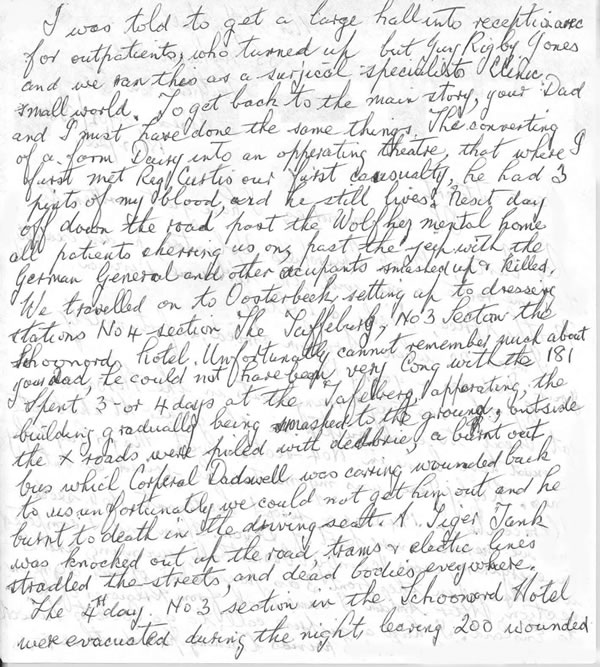 |
|
Extracts from a letter I received from Alec Hall another Arnhem veteran
who knew my dad and sat next to |
 |
This page is dedicated to my father and the countless others like him who risked their lives to secure the freedom that we now take for granted
 The final bridge at Arnhem,
(the 'Bridge Too Far'), the ultimate goal of Market Garden, was entrusted
to General Roy Urquhart and his 1st British Airborne Division. (Dad was
attached to this division as an R.A.M.C. Medical orderly). Opposition
was believed to be light, However, unbeknown to them, two elite German
SS Panzer Divisions had recently been billeted in and around the town.
These units were well trained, fresh from battle, and were equipped with
tanks. At the age of 19, Dad was at the epicentre of one of the most courageous
and bloody battles of WWII.
The final bridge at Arnhem,
(the 'Bridge Too Far'), the ultimate goal of Market Garden, was entrusted
to General Roy Urquhart and his 1st British Airborne Division. (Dad was
attached to this division as an R.A.M.C. Medical orderly). Opposition
was believed to be light, However, unbeknown to them, two elite German
SS Panzer Divisions had recently been billeted in and around the town.
These units were well trained, fresh from battle, and were equipped with
tanks. At the age of 19, Dad was at the epicentre of one of the most courageous
and bloody battles of WWII. I visted Oosterbeek with my father in the early 1980's
and we sat inside what is now the Schoonoord Café. He recalled being
outside as a German tank came down the road and drove straight past him
without incident. (He believed, probably rightly, that his Red Cross
armband saved him.) He also recalled the piles of dead bodies from both
sides that lay rotting all around. He never said much about his wartime
experiences as I suspect they were too difficult for him to speak about
in any depth.
I visted Oosterbeek with my father in the early 1980's
and we sat inside what is now the Schoonoord Café. He recalled being
outside as a German tank came down the road and drove straight past him
without incident. (He believed, probably rightly, that his Red Cross
armband saved him.) He also recalled the piles of dead bodies from both
sides that lay rotting all around. He never said much about his wartime
experiences as I suspect they were too difficult for him to speak about
in any depth. 
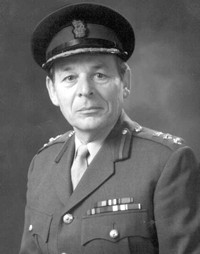
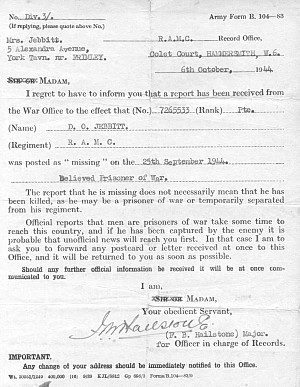
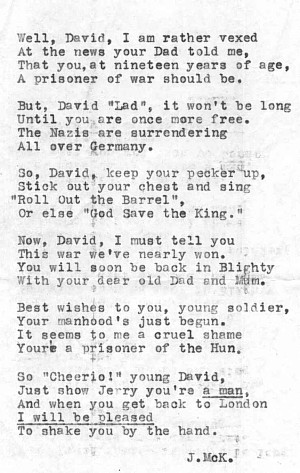
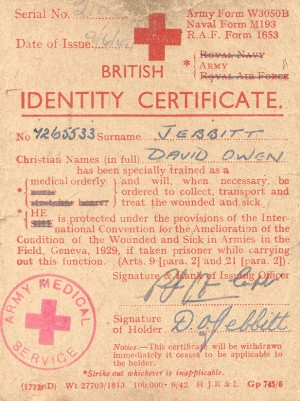

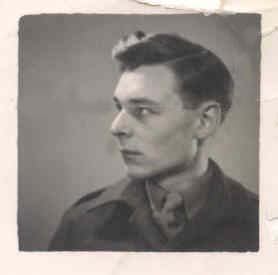



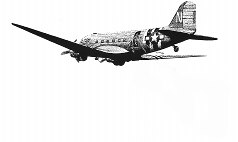 Back
Back